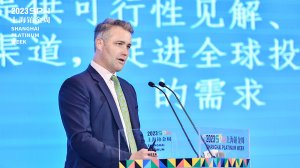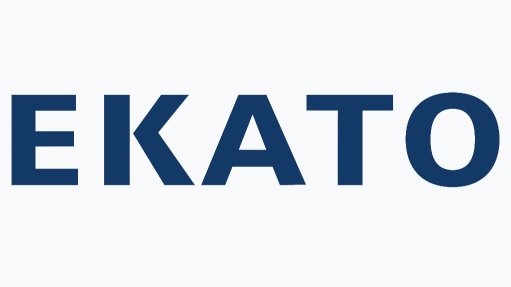Platinum demand outlook pretty robust, World Platinum Investment Council highlights

World Platinum Director of Research Edward Sterck interviewed by Mining Weekly's Martin Creamer. Video: Darlene Creamer.
JOHANNESBURG (miningweekly.com) – The outlook for platinum is one that's pretty robust, the World Platinum Investment Council (WPIC) has highlighted in its latest Platinum Quarterly, which shows the projection of the metal's demand as being very encouraging amid a near-record-low supply prediction.
Automotive demand is at a seven-year high, while first-quarter jewellery demand increased, which contrasted sharply with a worsening supply deficit projection of 476 000 oz.
Hybrid vehicle preference is pointing to a higher-for-longer automotive demand scenario with extended range electric vehicles still needing platinum group metals (PGM) in the exhaust treatment system.
More than $300-billion worth of government subsidies are focusing so much attention on the hydrogen economy that a separate Platinum Quarterly line item for stationary hydrogen demand has been included for the first time, against the background of 100%-plus near-term growth projection.
Meanwhile, the industrial profile for platinum remains healthy with more glassfibre manufacturing capacity upping the outlook for future demand for the metal that is finding an increasing number of roles to play.
Also, a network of partnerships is uplifting the fabrication and sale of platinum bar and coin in China and a highly successful cricket sponsorship has thrust male platinum jewellery demand in India on a quickly elevating 50%-plus growth horizon.
These are among many PGM advances raised in a far-reaching Zoom interview that Mining Weekly conducted with WPIC reseach director Edward Sterck. (Also watch attached Creamer Media video.)
On specific factors contributing to the forecast decrease in mined platinum supply, especially in South Africa and Russia, Sterck said the factors at work included the restructuring announcements made by the South African PGM mining companies in response to a depressed basket price as a result of the fall in the prices of palladium and rhodium.
"In very basic terms, we think that the restructuring announcements are reducing operational flexibility and that flows into the production numbers. You've also got some operational as well as geopolitical challenges in Russia. On the operational side, Russia is undertaking some maintenance on one of its more material smelters in terms of capacity. Secondly, the country is struggling to navigate their way through the sanctions that have been imposed on Russia in general," he said, adding that recycling is also running 12% to 15% below pre-Covid averages.
Mining Weekly: What has led to the recent rise in bar and coin demand in China, and how might this affect the overall market balance?
This is an area that we, as the World Platinum Investment Council, have been working quite hard on. As part of our organisation, we're trying to help producers manufacture bar and coin and sell investment products to predominately retail audiences but also to institutional investors as well. We've developed a network of partnerships in China for the fabrication and selling of bar and coin and we've just helped them with things like design and marketing, and had a great deal of success. Over the last few years, that has grown quite significantly. The numbers that we're factoring into Platinum Quarterly supply/demand estimates were 52 000 oz last year and a forecast of 60 000 oz this year, and that’s all in the smaller bar and coin categories. This is less than 500 g bars. On top of that, there are large bars that we have helped facilitate the production and sale of. Just putting a rough number on last year, there's another 100 000 oz of larger bars that are produced and sold in China that don't feature in our base case supply/demand analysis. If you factor those into this part of our balance, we take our deficit from 476 000 oz, add another 100 000 oz of larger bars on to that, you get pretty close to 600 000 oz in terms of a supply/demand deficit.
How is the growth in India’s platinum jewellery market impacting global demand, and do you foresee this trend continuing?
If you think about the jewellery market in general, and this is where India features significantly, it has been stagnant for a number of years. Effectively, China has been the biggest in the market for platinum jewellery consumption for a very long time. But for ten years or more that demand from China has been tailing off, and that process is continued all the way through until this year, although the forecast is for a slight improvement in China this year and we're seeing potential for some upside there. But in the last year and even the last six months, India has really transformed and its demand for platinum jewellery is growing significantly. That's serving both the domestic market but also manufacturing In India, with exports to the Middle East and also to North America, and the US in particular. The reasons behind that are actually largely because of very successful promotional activities by our sister organisation, Platinum Guild International, and they've identified that male jewellery in India is potentially a good market to address. They've sponsored Indian cricketers and they've had a great deal of success with promoting platinum jewellery. As a result, this year, jewellery demand in India is expected to be up by between 50% to 60% - quite a significant increase. Will that continue? It's a bit early to say this is a trend that's going to carry on but certainly it's encouraging and hopefully it does continue.
Despite a drop from last year's record highs, industrial demand remains strong. What are the key industrial applications driving this demand?
Most industrial sub-sectors are down year-on-year and I think it's important to emphasise that whilst they are down year-on-year, they're still at levels elevated versus history. Glass in particular, although it's down from a record year last year, is an area that remains robustly strong. A lot of glass end uses are the production of fiberglass and that fiberglass is getting into things such as light-weighting for vehicles, and that's obviously particularly important given the additional weight of battery electric vehicles. Or it's going into turbine blades for wind power generation, and wind power generating capacity is expected to double between last year and then 2030, globally. So, there's a lot of potential demand going forward for more glassfibre manufacturing capacity and that's something that's potentially beneficial for future platinum demand. Overall, the industrial demand profile for platinum is looking pretty healthy. Another factor that plays into that is the hydrogen economy and for the first time in this Platinum Quarterly, we split out a separate line item for stationary hydrogen demand, so that means electrolysers, and also stationary fuel cells and downstream uses of platinum including hydrogenation of hydrogen carriers. We expect that to grow by more than 100% year-over-year, and we expect that to be an increasingly important factor in industrial demand going forwards.
Given the diverse applications of platinum, what is the forecast for long-term demand, and what factors could significantly alter these forecasts?
The forecast demand is pretty encouraging. We generally seem to be coming around to a higher-for-longer demand outlook from automotive demand. That's on the back of consumers being a little reluctant to take the step to full battery electrification and so they're looking for partial battery electrification, which means hybrid vehicles. But also, it’s the hydrogen economy. The hydrogen economy is something that is taking a bit longer to come through as expected, but towards the end of this decade is expected to accelerate quite quickly. That's on the back of increasing deployment of electrolysers and also fuel cell electric vehicles. I'm quite confident in the destination for hydrogen demand for platinum. We've got more than 900 000 oz of platinum demand coming from the hydrogen industry in our numbers by 2030. But it's worth noting that the journey’s going to be quite up and down. You've only got to have a couple of facilities to delay by a year or so and it means that the immediate near-term demand can change quite materially. But the reason I'm confident in the destination is that we've gone in the last two years from $50-billion worth of government subsidies to over $300-billion worth of government subsidies. The money is there and is being deployed. We've seen the first hydrogen auctions occur in Europe, we've seen the first money being deployed for the Inflation Reduction Act in the US as well. So, the destination is known, the journey may be a little bit up and down, but in combination, all of these factors mean that the outlook for platinum demand is one that's pretty robust.
Do you expect the green investment case for platinum to get stronger this year?
Yes, I do, and it really comes down to those subsidies for hydrogen. We’re seeing dollars and euros beginning to be spent from those subsidies and so that's translating into infrastructure being built that starts in this year. In terms of the kind of green credentials, the bit that comes through on that is if there's any scepticism whether the hydrogen economy is really going to happen or not, now the sceptics can see that the money is being spent and things are being built, and that really helps to cement the understanding that this is happening.
Finally, what, in your view, should be the biggest takeaway from the latest Platinum Quarterly and updated forecast for 2024 as a whole?
The biggest takeaway, and this is perhaps a little bit of a setback from green credentials, is that we are seeing this consumer reluctance to go for full battery electrification. So, there is a gradual downgrade to expectations in terms of the pace of battery electrification of the drive train. This is going to happen, let's not beat around the bush, and it will gradually lead to an erosion of internal combustion engine production numbers, and obviously that translates into PGM demand. For platinum, of course, that erosion will be replaced in time by fuel cell electric vehicles. If we look at last year as an example, last year was the first year where battery electric vehicle production numbers fell short of expectations. At the beginning of the year, 11-million units were forecast in light duty vehicle terms and it ended up being ten-million units. We're seeing downgrades to the numbers for this year, so at the beginning of the year, 14-million units were forecast in terms of battery electric vehicle production numbers, and that's now been downgraded to less than 13-million units. Yet total light duty vehicle numbers are up. The difference is being made up by internal combustion engine vehicles that contain platinum. Now, the majority of those are hybrid vehicles, so partial battery electrification and including the fastest growing segment, and this is mainly in China, of extended range electric vehicles. These are battery electric vehicles with internal combustion engines, and the internal combustion engine, unlike in a plug-in hybrid, can't drive the wheels directly. All it does is act as a generator to charge the battery and these extended range electric vehicles can have ranges more than 1 000 km with a fully charged battery, and an internal combustion engine. Most of the time you’re driving in fully electric and plug in the car for short journeys. It's only really using the generator for much longer journeys, so the emissions profile is significantly reduced. It's a good transition technology, but you still need to treat those tailpipe emissions and that means that you must put platinum group metals in the exhaust treatment system. We think that all told, this trend is probably going to continue beyond this year, and it also helps the sceptical next cohort of consumers to make the step towards battery electrification, albeit in a staged fashion – but it also means higher-for-longer demand by the automotive industry for PGMs and platinum, so overall, it's encouraging for medium to longer term demand.
SECOND YEAR OF POSITIVE INVESTMENT
Platinum exchange traded fund (ETF) holdings saw a first-quarter increase of 11 000 oz to 3 077 000 oz of platinum, with gains in Western-held funds partially offset by declines in South Africa.
In 2024, net platinum investment is expected to remain positive for the second consecutive year at 99 000 oz.
In North America, bar and coin demand remains above pre-pandemic levels, and China's retail investment in platinum is forecast to exhibit double-digit growth to 60 000 oz, driven by perceptions of the metal being undervalued relative to gold.
Platinum ETF holdings are projected to decrease by 120 000 oz to 2 946 000 oz, as high interest rates continue to discourage investment in non-yielding assets. The change in Stocks Held by Exchanges (combined Nymex and TOCOM) is expected to increase by 38%.
“For the second consecutive year, the platinum market will post a meaningful deficit underscored by platinum's sustained demand and supply vulnerability amidst global economic challenges," WPIC CEO Trevor Raymond commented.
“While we currently forecast a deficit of 476 000 oz, it's worth mentioning that a revision to the bar and coin investment series, based on new field research and information, could mean this deficit is potentially deeper.
"An ongoing review by Metals Focus, the organisation which independently supplies our data, identified the strong growth in platinum bars manufactured and sold in China and has included bars less than 500 g in our published data.
'While 500 g and 1 kg bars are currently excluded from demand data, sales of these larger bars in 2023 exceeded 100 000 oz, with signs of strong growth into 2024. Inclusion of these investment bars in demand data would have materially increased the published platinum market deficit.
“Platinum’s significant demand in 2024 is to a large extent predicated on continued platinum automotive demand growth. This is despite a forecast rise in battery electric vehicles and reduction in internal combustion engine vehicle production.
"Platinum demand is bolstered by stricter emissions legislation, increased hybrid vehicles that contain an internal combustion engine, and growth in the substitution of platinum for palladium. It is important to note that once platinum is substituted for palladium in specific vehicle platforms, this demand for platinum is likely to remain constant throughout the platform's seven-year lifecycle, even if platinum prices rise to, or exceed, those of palladium for an extended period.
“Meanwhile continuing challenges present downside risks to supply into next year, not least as miners look to reassess production plans and restructure operations to manage the negative impact of the significant decrease in the PGM basket price on mining profitability.
"It's worth noting that the effects of supply rationalisation plans will have both a short-term downside effect as well as severely constrain any near-term supply response to demand growth or higher platinum prices. Meanwhile, recycling supply continues to run well below historical levels and there are risks to the pace of the projected recovery that could make it more protracted, further exacerbating deficits.
“Finally, we are now seeing signs that platinum’s role in the hydrogen economy is gaining momentum, with our forecast for 2024 indicating a significant increase in demand to meaningful levels,” Raymond stated in a release to Mining Weekly.
Article Enquiry
Email Article
Save Article
Feedback
To advertise email advertising@creamermedia.co.za or click here
Press Office
Announcements
What's On
Subscribe to improve your user experience...
Option 1 (equivalent of R125 a month):
Receive a weekly copy of Creamer Media's Engineering News & Mining Weekly magazine
(print copy for those in South Africa and e-magazine for those outside of South Africa)
Receive daily email newsletters
Access to full search results
Access archive of magazine back copies
Access to Projects in Progress
Access to ONE Research Report of your choice in PDF format
Option 2 (equivalent of R375 a month):
All benefits from Option 1
PLUS
Access to Creamer Media's Research Channel Africa for ALL Research Reports, in PDF format, on various industrial and mining sectors
including Electricity; Water; Energy Transition; Hydrogen; Roads, Rail and Ports; Coal; Gold; Platinum; Battery Metals; etc.
Already a subscriber?
Forgotten your password?
Receive weekly copy of Creamer Media's Engineering News & Mining Weekly magazine (print copy for those in South Africa and e-magazine for those outside of South Africa)
➕
Recieve daily email newsletters
➕
Access to full search results
➕
Access archive of magazine back copies
➕
Access to Projects in Progress
➕
Access to ONE Research Report of your choice in PDF format
RESEARCH CHANNEL AFRICA
R4500 (equivalent of R375 a month)
SUBSCRIBEAll benefits from Option 1
➕
Access to Creamer Media's Research Channel Africa for ALL Research Reports on various industrial and mining sectors, in PDF format, including on:
Electricity
➕
Water
➕
Energy Transition
➕
Hydrogen
➕
Roads, Rail and Ports
➕
Coal
➕
Gold
➕
Platinum
➕
Battery Metals
➕
etc.
Receive all benefits from Option 1 or Option 2 delivered to numerous people at your company
➕
Multiple User names and Passwords for simultaneous log-ins
➕
Intranet integration access to all in your organisation


















